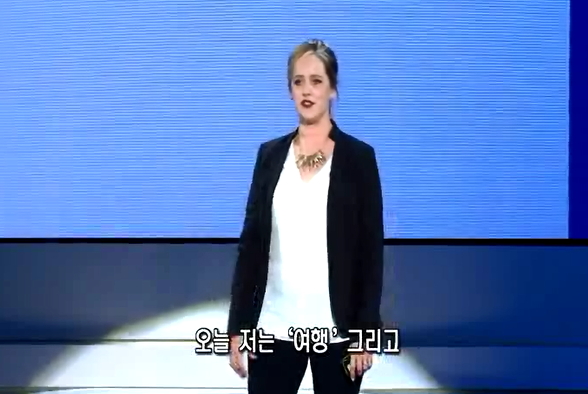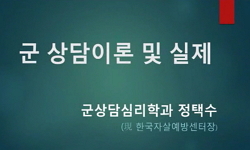This study compared opinion leaders of online communities with non-opinion leaders in terms of their motivation for joining online communities, level of online participation, and online relationship formation. Based on an online survey of 206 people l...
http://chineseinput.net/에서 pinyin(병음)방식으로 중국어를 변환할 수 있습니다.
변환된 중국어를 복사하여 사용하시면 됩니다.
- 中文 을 입력하시려면 zhongwen을 입력하시고 space를누르시면됩니다.
- 北京 을 입력하시려면 beijing을 입력하시고 space를 누르시면 됩니다.
https://www.riss.kr/link?id=A76533172
- 저자
- 발행기관
- 학술지명
- 권호사항
-
발행연도
2009
-
작성언어
Korean
- 주제어
-
KDC
070
-
등재정보
KCI우수등재
-
자료형태
학술저널
- 발행기관 URL
-
수록면
372-394(23쪽)
-
KCI 피인용횟수
31
- 제공처
-
0
상세조회 -
0
다운로드
부가정보
다국어 초록 (Multilingual Abstract)
This study compared opinion leaders of online communities with non-opinion leaders in terms of their motivation for joining online communities, level of online participation, and online relationship formation. Based on an online survey of 206 people living in four cities of New York State, this study employed a cluster analysis to distinguish opinion leaders from non opinion leaders. The study found that online leaders do exist within online communities. Opinion leaders showed higher motivations for joining communities, higher levels of community participation, and formed online relationships more frequently than non-opinion leaders. Additionally, an SEM was conducted to look at the relationships among motivation for online community participation, levels of participation and relationship formation for opinion leader and non-opinion leader groups. The SEM shows that opinion leaders joined communities for entertainment and social relationship purposes, while non-opinion leaders joined communities primarily for information seeking. This implies that opinion leaders are joining online communities to discuss their ideas and form social relations, whereas non-opinion leaders are joining online communities to seek information.
참고문헌 (Reference)
1 김관규, "인터넷의 양방향 공개커뮤니케이션 장을 창출한 적극적 발신행위자의 속성에 관한 연구 : 오피니언 리더의 속성을 중심으로" 한국언론정보학회 31 : 51-84, 2005
2 최영, "인터넷 신문의 공론장 역할에 대한 연구: 토론 참여자의 익명성과 토론 매개자의 신분이 토론에 미치는 영향을 중심으로" 2 (2): 115-158, 2002
3 박현구, "온라인 환경의 이모티콘과 비언어 행위의 관계: 관계통제 기제로서의 이모티콘" 한국지역언론학회 5 (5): 273-302, 2005
4 박성복, "온라인 대인관계의 정서적 애착(emotional attachment)형성에 관한 연구: 온라인 커뮤니티의 번개모임의 영향력을 중심으로" 한국언론학회 51 (51): 407-429, 2007
5 박성복, "온라인 공간에서의 자기노출, 친밀감, 공동 공간감에 관한 연구" 한국언론학회 51 (51): 469-495, 2007
6 김세은, "시사 분야 의견지도자 성향 연구 : 인구사회학적 특성과 미디어 이용을 중심으로" 한국언론학회 50 (50): 91-114, 2006
7 김현주, "사이버 여론 지도자 성향 연구: 인구사회학적 특성과 미디어 이용을 중심으로" 217-264, 2005
8 이준응, "누가 인터넷 토론에서 영향력을 행사하는가?: 온라인 의견지도자의 속성" 한국언론학회 51 (51): 358-384, 2007
9 배병렬, "구조방정식 모델: 이해와 활용" 대경 2002
10 Levy, M. R, "VCR use and the concept of audience activity" 35 : 267-275, 1987
1 김관규, "인터넷의 양방향 공개커뮤니케이션 장을 창출한 적극적 발신행위자의 속성에 관한 연구 : 오피니언 리더의 속성을 중심으로" 한국언론정보학회 31 : 51-84, 2005
2 최영, "인터넷 신문의 공론장 역할에 대한 연구: 토론 참여자의 익명성과 토론 매개자의 신분이 토론에 미치는 영향을 중심으로" 2 (2): 115-158, 2002
3 박현구, "온라인 환경의 이모티콘과 비언어 행위의 관계: 관계통제 기제로서의 이모티콘" 한국지역언론학회 5 (5): 273-302, 2005
4 박성복, "온라인 대인관계의 정서적 애착(emotional attachment)형성에 관한 연구: 온라인 커뮤니티의 번개모임의 영향력을 중심으로" 한국언론학회 51 (51): 407-429, 2007
5 박성복, "온라인 공간에서의 자기노출, 친밀감, 공동 공간감에 관한 연구" 한국언론학회 51 (51): 469-495, 2007
6 김세은, "시사 분야 의견지도자 성향 연구 : 인구사회학적 특성과 미디어 이용을 중심으로" 한국언론학회 50 (50): 91-114, 2006
7 김현주, "사이버 여론 지도자 성향 연구: 인구사회학적 특성과 미디어 이용을 중심으로" 217-264, 2005
8 이준응, "누가 인터넷 토론에서 영향력을 행사하는가?: 온라인 의견지도자의 속성" 한국언론학회 51 (51): 358-384, 2007
9 배병렬, "구조방정식 모델: 이해와 활용" 대경 2002
10 Levy, M. R, "VCR use and the concept of audience activity" 35 : 267-275, 1987
11 Katz, E, "Utilization of mass communication by the individual" Sage 19-32, 1974
12 Fenech, T, "Using perceived ease of use and perceived usefulness to predict acceptance of the World Wide Web" 30 : 629-630, 1998
13 Garramone, G, "Uses of political bulletin boards" 30 : 325-339, 1986
14 Palmgreen, P, "Uses and gratifications: A theoretical perspective" Sage 20-55, 1984
15 Ruggiero, T. E, "Uses and gratifications theory in the 21st Century" 3 : 3-37, 2000
16 Stafford, T. F, "Uses and gratifications of the world wide web: A preliminary study" 1998
17 Charney, T, "Uses and gratifications of the internet" Hampton 379-407, 2001
18 Ferguson, D. A, "The world wide web as a functional alternative to television" 44 : 155-174, 2000
19 Rheingold, E. S, "The virtual community: Homesteading on the electronic frontier" The MIT Press 1993
20 Blumler, J. G, "The uses of mass communications: Current perspectives on gratifications research" Sage 1974
21 Katz, E, "The two-step flow of communication: An up-to-date report on an hypothesis" 21 : 61-78, 1957
22 Short, J, "The social psychology of telecommunications" Wiley 1976
23 Lazarsfeld, P. F, "The people’s choice: How the coter makes up his mind in a presidential campaign" Columbia University Press 1944
24 Pew Research Center for the People and the Press, "The internet news audience goes ordinary"
25 Dicken-Gracia, H, "The internet and continuing historical discourse" 75 : 19-27, 1998
26 Weimann, G, "The influentials: People who influence people" State University of New York Press 1994
27 Keller, E. B, "The influentials: One American in ten tells the other nine how to vote, where to eat, and what to buy" Simon & Schuster 2003
28 Weimann, G, "The influentials: Back to the concpet of opinion leaders?" 55 : 267-279, 1991
29 Dubrovsky, V. J, "The equation phenomenon: Status effects in computer-mediated and face-to-face decision-making groups" 6 : 119-146, 1991
30 Pool, I. D, "Technologies of freedom" Harvard University Press 1983
31 Wells, W. D, "Surf’s up-differences between web surfers and non-surfers: Theoretical and practical implications" 1999
32 Garton, L, "Social impacts of electronic mail in organizations: A review of the research literature" Sage 434-453, 1995
33 Stoll, C, "Silicon snake oil: Second thoughts on the information highway" Doubleday 1995
34 Berry, W, "Sex, economy, freedom and community" Pantheon 1993
35 Sproull, L, "Reducing social context cues: Electronic mail in organizational communication" 32 : 1492-1513, 1986
36 Eighmey, J, "Profiling user responses to commercial web sites" 37 : 59-66, 1997
37 Papacharissi, Z, "Predictors of Internet use" 44 : 175-196, 2000
38 Lin, C. A, "Predicting adoption of multimedia cable service" 75 : 251-275, 1998
39 Beninger, J. R, "Personalized of mass media and the growth of pseudo-community" 14 : 352-371, 1987
40 Scheufele, D. A, "Personality strength and social capital: The role of dispositional and informational variables in the production of civic participation" 27 : 107-131, 2000
41 Katz, E, "Personal influence: The part played by people in the flow of mass communications" Free Press 1955
42 Spears, R, "Panacea or panopticon? The hidden power in computer-mediated communication" 21 : 427-459, 1994
43 Lyons, B, "Opinion leadership in a computer-mediated environment" 4 : 319-329, 2005
44 Hellevik, O, "Opinion leadership and political extremism" 3 : 157-181, 1991
45 Kaye, B. K, "Online and in the know: Uses and gratifications of the web for political information" 46 : 54-71, 2002
46 Ahuja, M. K, "Network structure in virtual organizations" 10 : 741-757, 1999
47 Ahuja, M. K, "Network structure in virtual organizations" 10 : 741-757, 1999
48 Rogers, E. M, "Methods of measuring opinion leadership" 26 : 435-441, 1962
49 Chaffee, S. H, "Mass media and interpersonal channels: Competitive, convergent or complimentary?" Oxford University Press 57-77, 1982
50 Parks, M. R, "Making friends in cyberspace" 46 : 80-97, 1996
51 Walther, J. B, "Interpersonal effects in comupter-mediated interaction: A relational perspective" 19 : 52-90, 1992
52 Walter, J. B, "Interperosnal effects in computer-meidated interaction: A meta-analysis of social and antisocial communication" 21 : 460-487, 1994
53 Bruckman, A, "Identity workshop: Emergent social and psychological phenomena in text-based virtual reality"
54 Noelle-Neumann, E, "Identifying opinion leaders" 1985
55 Stafford, T. F, "Identifying motivations for the use of commerical web sites" 14 : 22-30, 2001
56 O’Mahony, S, "Hacking alone? The effects of online and offline participation on open source community leadership"
57 Kiesler, S, "Group decision making and communication technology" 52 : 96-123, 1992
58 Swanson, D. L, "Gratification seeking, media exposure, and audicne interoretations" 31 : 237-254, 1987
59 Shah, D. V, "Explicating opinion leadership: Nonpolitical disposition, information consumption, and civic participation" 23 : 1-22, 2006
60 Schuldt, B, "Electronic mail vs. mail survey response rates" 6 : 36-39, 1994
61 Norris, P, "Does television erode social capital? A reply to Putman" 29 : 474-480, 1996
62 Rogers, E. M, "Diffusion of innovations (4th ed.)" Free Press 1995
63 Berkman, H. W, "Consumer behavior: Concepts and strategies" South -Western Educational Publishing 1986
64 Walther, J. B, "Computer-mediated communication: Impersonal, interpersonal, and hyperpersonal interaction" 23 : 3-43, 1996
65 Wilkins, H, "Computer talk: Long-distance conversations by computer" 8 : 56-78, 1991
66 Tse, A. C. B, "Comparing two methods of sending out questionnaires: E-mail versus mail" 37 : 441-446, 1995
67 Chan, K. K, "Characteristics of opinion leaders: A new dimension" 19 : 53-60, 1990
68 Smith, C. B, "Casting the net: Surveying an internet population"
69 김문수, "CMC를 통한 대인 관계 형성에 대한 연구: 사회적 맥락단서와 요망성을 중심으로" 한국언론학회 49 (49): 191-217, 2005
70 Lin, C. A, "Audience attributes, media supplementation, and likely online service adoption" 4 : 19-38, 2001
71 James, M. L, "An exploratory study of the perceived benefits of electronic bulletin bopard use and their impact on other communication activities" 39 : 30-50, 1995
72 Brennan, P. F, "Alzheimers’ disease caregivers’ uses of a computer network" 14 : 662-673, 1992
73 Eighmey, J, "Adding value in the information age: Uses and gratifications of sites on the world wide web" 41 : 187-194, 1998
74 Korgaonkar, P. K, "A multivariate analysis of web usage" 39 : 53-68, 1999
75 Spears, R, "A SIDE view of social influence" Psychology Press 331-350, 2001
동일학술지(권/호) 다른 논문
-
- 한국언론학회
- 사영준(Young June Sah)
- 2009
- KCI우수등재
-
인터넷 뉴스 댓글이 여론 및 기사의 사회적 영향력에 대한 지각과 수용자의 의견에 미치는 효과
- 한국언론학회
- 이은주(Eun-Ju Lee)
- 2009
- KCI우수등재
-
- 한국언론학회
- 황성욱(Sungwook Hwang)
- 2009
- KCI우수등재
-
- 한국언론학회
- 김춘식(Chunsik Kim)
- 2009
- KCI우수등재
분석정보
인용정보 인용지수 설명보기
학술지 이력
| 연월일 | 이력구분 | 이력상세 | 등재구분 |
|---|---|---|---|
| 2022 | 평가예정 | 계속평가 신청대상 (등재유지) | |
| 2017-01-01 | 평가 | 우수등재학술지 선정 (계속평가) | |
| 2013-01-01 | 평가 | 등재학술지 유지 (등재유지) |  |
| 2010-01-01 | 평가 | 등재학술지 유지 (등재유지) |  |
| 2008-01-01 | 평가 | 등재학술지 유지 (등재유지) |  |
| 2006-01-01 | 평가 | 등재학술지 유지 (등재유지) |  |
| 2004-01-01 | 평가 | 등재학술지 유지 (등재유지) |  |
| 2001-07-01 | 평가 | 등재학술지 선정 (등재후보2차) |  |
| 1999-01-01 | 평가 | 등재후보학술지 선정 (신규평가) |  |
학술지 인용정보
| 기준연도 | WOS-KCI 통합IF(2년) | KCIF(2년) | KCIF(3년) |
|---|---|---|---|
| 2016 | 1.75 | 1.75 | 1.94 |
| KCIF(4년) | KCIF(5년) | 중심성지수(3년) | 즉시성지수 |
| 2.07 | 2.11 | 2.773 | 0.4 |





 DBpia
DBpia




